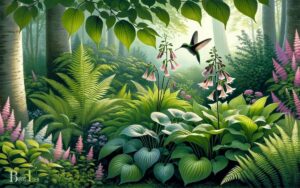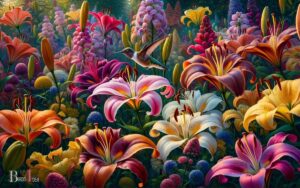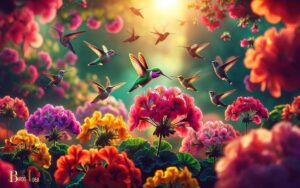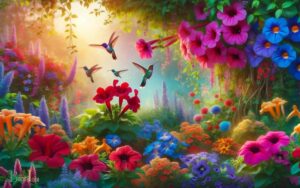What Animals Are Attracted to Hummingbird Feeders? Explore!
Hummingbird feeders are designed to lure hummingbirds with their nectar, but they also attract a range of other animals.
Besides the intended hummingbird visitors, various species such as bees, wasps, ants, butterflies, moths, and even mammals like squirrels may frequent these feeders.
Being aware of the diversity of wildlife drawn to hummingbird feeders is beneficial for those looking to maintain a balanced and animal-friendly garden.
Hummingbird feeders provide a reliable source of sugar-rich nectar, which is irresistible to many animals.
For example:
Understanding this attraction can help in managing feeders to either deter unwanted guests or to welcome a wider array of wildlife.
Discover the variety of wildlife that shares the hummingbirds’ fondness for nectar with a visit to your garden’s feeder.
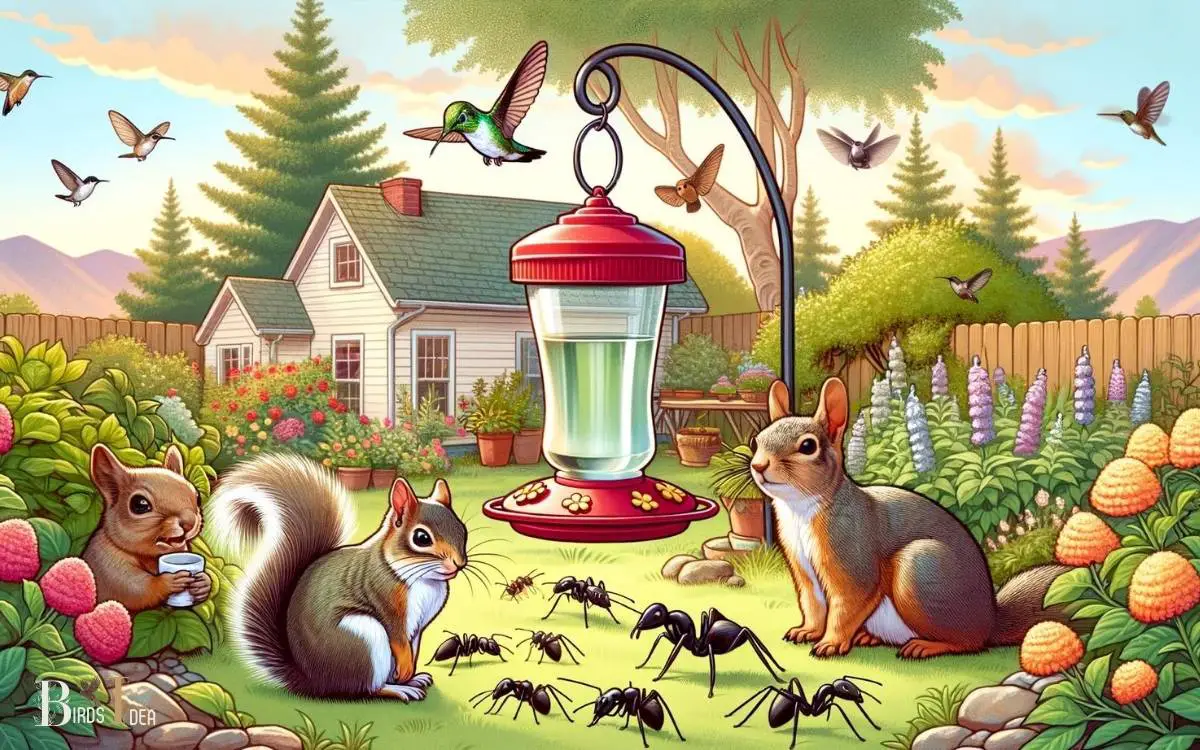
Key Takeaway
7 Animals That Are Attracted to Hummingbird Feeders
| Animal Type | Attraction Reason | Impact on Feeders |
|---|---|---|
| Hummingbirds | Nectar | Primary intended visitors |
| Butterflies | Nectar | Harmless visitors |
| Moths | Nectar | Harmless visitors |
| Bees | Nectar | May deter hummingbirds |
| Wasps | Nectar | May deter hummingbirds |
| Ants | Nectar | Considered nuisances |
| Squirrels | Nectar | Can damage feeders |
Hummingbirds: The Primary Visitors
Hummingbirds are the primary visitors to hummingbird feeders due to their attraction to nectar. These tiny, agile birds have long, slender bills perfectly adapted for reaching deep into flowers to extract nectar.
They are known for their remarkable flying abilities, being able to hover in mid-air and even fly backward.
Their rapid wingbeats, which can range from 50 to 200 times per second, allow them to move with great precision and control, making them well-suited for feeding from the small feeding ports found on hummingbird feeders.
Their keen eyesight also helps them locate feeders, often from a distance. As a result, the presence of a hummingbird feeder is likely to attract these fascinating creatures, providing an opportunity for close observation of their behavior and vibrant plumage.
Butterflies and Moths: Delicate Pollinators
Attracted to the sweet nectar, butterflies and moths are often drawn to hummingbird feeders, contributing to the pollination of nearby plants.
These delicate pollinators play a crucial role in the ecosystem, enhancing the beauty of gardens and landscapes while aiding in the reproduction of various plant species.
Their graceful presence adds a touch of elegance to the feeding area, captivating observers with their vibrant colors and intricate wing patterns.
As they flutter around the feeder, their gentle movements create a serene ambiance, inspiring a sense of tranquility and wonder.
The sight of these ethereal creatures delicately sipping nectar is a reminder of the interconnectedness of all living organisms, fostering a deeper appreciation for the natural world.
- The mesmerizing dance of butterflies and moths around the feeder captivates the onlookers, evoking a sense of awe and admiration.
- Their delicate wings showcase a stunning array of colors and patterns, adding a touch of elegance to the feeding area.
- The gentle fluttering of these pollinators creates a serene ambiance, fostering a feeling of tranquility and peace.
- Observing these ethereal creatures delicately sipping nectar serves as a poignant reminder of the interconnectedness of all living organisms.
- The presence of butterflies and moths at the hummingbird feeder inspires a deeper appreciation for the beauty and diversity of the natural world.
Bees and Wasps: Nectar Seekers
Nectar-seeking bees and wasps are commonly drawn to hummingbird feeders due to the sweet nectar they contain.
These insects are equipped with specialized mouthparts, such as elongated proboscises, that allow them to access the nectar hidden within the flowers, and this ability also extends to feeding from hummingbird feeders.
Bees, including honeybees and bumblebees, are often seen hovering around the feeding ports, while wasps may crawl inside the feeder to access the nectar.
It’s essential to note that while bees and wasps are attracted to the sweet nectar, they are not efficient pollinators like hummingbirds. Their presence at the feeder can sometimes deter hummingbirds, leading to potential competition for the nectar resources.
Therefore, it’s important to consider strategies to minimize the attraction of bees and wasps, such as using bee guards and selecting feeder designs that make access more challenging for these insects.
Ants: Persistent Nuisances
Insects with a persistent attraction to hummingbird feeders include ants, which can become a nuisance due to their relentless pursuit of the sweet nectar within the feeders. When ants infest hummingbird feeders, it can be frustrating for bird enthusiasts.
The following are observations on the pesky behavior of ants at hummingbird feeders:
- Ants form long trails, invading feeders in large numbers.
- They contaminate the nectar, rendering it unpalatable for hummingbirds.
- Ants can overwhelm the feeding ports, preventing access for the intended avian visitors.
- They are relentless in their pursuit, requiring consistent efforts to deter their presence.
- The presence of ants can deter hummingbirds from visiting the feeders altogether.
Squirrels and Other Unexpected Guests
Persistent pests, such as squirrels and other unexpected guests, can pose additional challenges when maintaining hummingbird feeders. Squirrels are notorious for raiding bird feeders and can also target hummingbird feeders.
Their acrobatic abilities and persistent nature make it difficult to keep them away. Squirrels can not only consume the nectar meant for hummingbirds but also damage the feeders with their gnawing and climbing.
Additionally, raccoons, deer, and even bears have been known to visit hummingbird feeders, causing damage and scaring away the delicate birds.
To deter these unexpected guests, consider placing baffles or guards on feeder poles, using squirrel-proof feeders, or even employing motion-activated deterrents.
By understanding and addressing the behaviors of these unexpected guests, enthusiasts can better protect their hummingbird feeders and the birds they attract.
Conclusion
Hummingbird feeders attract a variety of animals, including butterflies, bees, ants, and even squirrels. These unexpected guests can create a diverse ecosystem around the feeders, adding to the natural beauty and wonder of observing wildlife.
It’s fascinating to see how these tiny feeders can attract such a wide range of creatures, making it a truly enchanting sight for any nature enthusiast.

